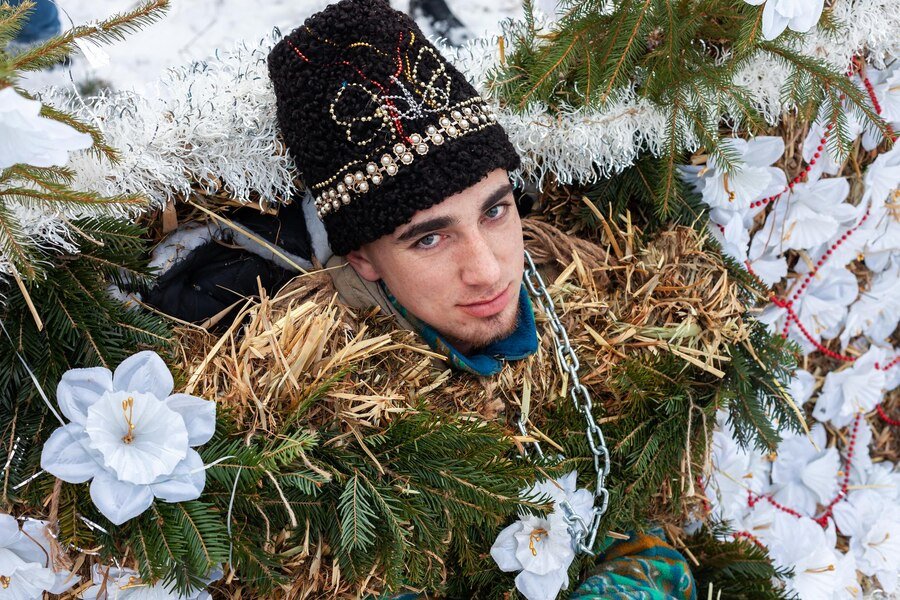In the realm of folklore and myth, Finland boasts a wide range of captivating characters, each with a unique tale and symbolism. Among them, Kari Kinnaslapi stands out as a distinctive figure—both mysterious and enduring. This legendary character has intrigued many with its connection to Finnish culture, stories, and timeless symbolism. But who exactly is Kari Kinnaslapi? Why has this character become a prominent part of Finnish folklore, and what does Kari Kinnaslapi symbolize for the people of Finland? Let’s dive deep into the story of Kari Kinnaslapi and uncover the layers of meaning that make this cultural icon truly unique.
What Is Finnish Folklore?
Finnish folklore, with its roots deeply embedded in ancient tales and oral traditions, is a treasure trove of mythology, magic, and heroism. Many of these tales were passed down through generations, blending history, mystery, and moral teachings. They offer insight into Finnish values, beliefs, and the landscape itself, where nature and mystical creatures intertwine. Kari Kinnaslapi is among these stories, representing a figure rich with symbolism that reflects both the mystical and practical elements of Finnish life.
The Origins of Kari Kinnaslapi
Kari Kinnaslapi’s origins trace back centuries, where it first emerged in village tales and oral traditions. Known as a mythical or symbolic character, Kari is often linked to nature and strength. In early stories, Kari Kinnaslapi is portrayed as a protector of the people, representing resilience and bravery. Though various versions of the tale exist, Kari consistently embodies a connection to nature, resourcefulness, and wisdom.
Symbolism Behind Kari Kinnaslapi
Kari Kinnaslapi’s symbolism runs deep in Finnish culture. The character embodies a unique blend of human and supernatural traits, connecting to themes of endurance, adaptability, and protection. Some see Kari as a guardian of the Finnish landscape, embodying the country’s natural elements and guiding people to live in harmony with nature. Kari is often depicted as clever, resilient, and wise, traits admired by the Finnish people.
Kari Kinnaslapi in Popular Culture
In modern Finnish literature and popular culture, Kari Kinnaslapi has made appearances in various forms—books, plays, and even films. Kari’s character has evolved over the years, adapting to new generations’ interpretations. Whether as a brave warrior or a wise sage, Kari remains a respected figure in contemporary retellings, a bridge connecting past folklore with modern storytelling.
Kari Kinnaslapi’s Role in Finnish Festivals
Kari Kinnaslapi’s influence can also be seen in various Finnish festivals and celebrations. During midsummer or harvest festivals, tales of Kari are recounted, and people often draw inspiration from Kari’s resilience and bravery. These festivals celebrate not only the stories themselves but also the values Kari represents, reminding people of the character’s continued relevance.
The Symbol of Nature and Landscape
In many interpretations, Kari Kinnaslapi is associated with the vast, rugged landscapes of Finland—its dense forests, glistening lakes, and untamed wilderness. The character often symbolizes a guardian or protector of these landscapes, standing as a reminder of the importance of respecting nature and living in harmony with it. This portrayal aligns with the Finnish value of sisu, which embodies strength and perseverance, particularly in the face of adversity.
The Influence of Sisu on Kari Kinnaslapi’s Legacy
The Finnish concept of sisu—meaning resilience, determination, and the ability to overcome challenges—plays a crucial role in Kari Kinnaslapi’s story. This cultural principle defines the character’s endurance and courage, which resonate with the Finnish people. Kari’s legacy serves as an embodiment of sisu, inspiring others to face hardships with a determined spirit, just as Kari does in the tales.
How Kari Kinnaslapi Resembles Other Folk Heroes
Like many folk heroes around the world, Kari Kinnaslapi shares similarities with other cultural figures who represent resilience, bravery, and moral integrity. From the Native American trickster figures to Scandinavian gods, folk heroes like Kari reflect the values and aspirations of their people. These comparisons highlight the universal appeal of such characters, who often serve as both protectors and guides.
Kari Kinnaslapi and the Wisdom of the Elders
Kari Kinnaslapi’s tales often depict the character as a figure of wisdom, drawing knowledge from the natural world and the elders’ teachings. In Finnish folklore, elders play a crucial role as keepers of knowledge and traditions, and Kari embodies this respect for wisdom. Stories of Kari often portray the character as someone who uses wit over brute force, mirroring the Finnish value of subtlety and intelligence.
The Lessons from Kari Kinnaslapi’s Story
Kari Kinnaslapi’s stories are rich with lessons that resonate with both young and old. Common themes include resilience, the importance of community, and living in harmony with nature. These tales encourage people to approach life with patience, creativity, and respect for others. Through Kari’s example, these lessons are preserved and passed down, reinforcing values that remain important in modern society.
Why Kari Kinnaslapi Is Still Relevant Today
Despite the passage of time, Kari Kinnaslapi’s story remains relevant in Finnish culture. Many see Kari as a timeless figure, whose values of courage, wisdom, and respect for nature are universal and adaptable to modern challenges. Kari serves as a reminder of the importance of cultural heritage and the power of storytelling in preserving a nation’s identity.
The Future of Kari Kinnaslapi in Finnish Folklore
With the rise of digital storytelling and renewed interest in folklore, Kari Kinnaslapi’s story continues to evolve. As younger generations find new ways to connect with traditional stories, Kari’s tale is likely to be reimagined in ways that reflect current issues like environmental awareness and resilience in times of crisis. This adaptability ensures that Kari’s story will live on, connecting Finland’s past with its future.
How Kari Kinnaslapi Inspires Modern Finnish Youth
For many young people in Finland, Kari Kinnaslapi serves as a source of inspiration. The character’s courage, resilience, and wisdom resonate deeply, especially as these values are more relevant than ever. With challenges like climate change and social upheaval, Kari’s story encourages youth to uphold the spirit of sisu, to stay brave, and to protect the environment.
Educational Uses of Kari Kinnaslapi’s Story

Educators often use Kari Kinnaslapi’s story to teach Finnish folklore, ethics, and cultural history. The tale of Kari offers a rich source of moral and cultural lessons, making it a valuable educational tool. By studying Kari’s story, students gain insights into Finnish values and how they can apply these principles in their own lives.
Conclusion
Kari Kinnaslapi stands as a powerful figure within Finnish folklore, embodying the values of resilience, wisdom, and harmony with nature. From ancient tales to modern adaptations, Kari’s legacy continues to inspire, offering a timeless reminder of the importance of cultural heritage and the enduring spirit of sisu. As Finnish society evolves, Kari Kinnaslapi’s story will undoubtedly adapt, bridging the past with the present and ensuring that the essence of Finnish folklore remains alive for future generations.
FAQs
Who is Kari Kinnaslapi?
Kari Kinnaslapi is a symbolic character in Finnish folklore known for embodying resilience, wisdom, and a deep connection to nature.
What does Kari Kinnaslapi symbolize?
Kari symbolizes endurance, bravery, and harmony with nature, reflecting core Finnish values.
Is Kari Kinnaslapi still relevant today?
Yes, Kari’s story continues to inspire with lessons on resilience and respect for nature, making it relevant for modern times.
How is Kari Kinnaslapi used in education?
Kari’s story is used to teach cultural values, ethics, and Finnish history, providing valuable lessons for students.
Does Kari Kinnaslapi appear in modern media?
Yes, Kari appears in books, plays, and films, evolving with new interpretations for contemporary audiences.










